E-commerce photography is an essential element in the world of online shopping. It’s the bridge that connects your products to your customers, making it crucial to get it right.
Among this, professional photography services play a key role, ensuring that your products are showcased in the most eye-catching light possible. But the question is, how to do ecommerce photography?
To excel in e-commerce photography, create a dedicated space with excellent lighting and a clean backdrop. Utilize a high-quality camera to capture your product from multiple angles. After shooting, apply editing techniques to enhance the images, preparing them for your e-commerce platform.
Want to unravel the enigma? Stick around as we dive deeper into the world of e-commerce photography in this article.
What Does E-commerce Photography Do Mean?
E-commerce photography is all about showcasing products in the online marketplace. It’s the art of capturing your items in a way that makes them irresistible to potential buyers scrolling through your website or online store.
This type of photography focuses on presenting products in a clear, attractive, and professional manner. It’s not just about taking a quick snapshot; it’s about creating images that highlight the best features of your products, from their colors and textures to their shapes and sizes.
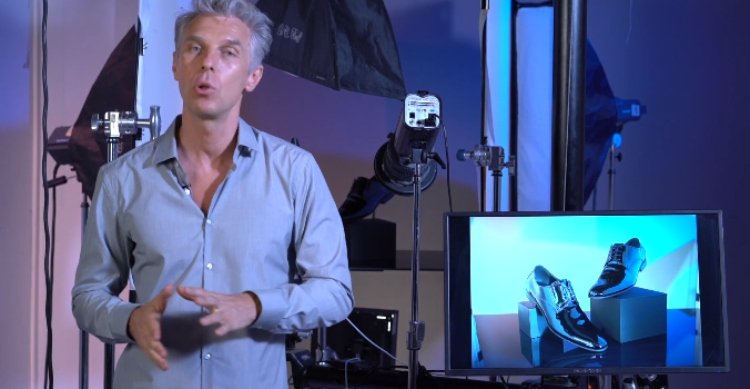
Good e-commerce photography can make a huge difference in how customers perceive your products, ultimately influencing their decision to click that “add to cart” button.
For these reasons, whether you’re selling clothes, gadgets, or home decor, investing in quality e-commerce photography is a crucial step in setting your online business up for success.
Why is Top-notch Photography Needed for E-commerce Photography?
Top-notch photography isn’t just a nice-to-have. It’s a must-have in the animated world of professional E-commerce image editing. Let’s dive into why this is the case.
- First Impressions Matter: When customers browse online, they can’t touch or try on products. High-quality images are their first interaction with your items, so make a good impression.
- Builds Trust: Clear, detailed photos show customers exactly what they’re getting, reducing uncertainty and building trust in your brand.
- Increases Engagement: Eye-catching images grab attention and encourage shoppers to explore your site further, increasing the chances of making a sale.
- Enhances Brand Image: Consistent, professional photography reflects positively on your brand, helping to establish your reputation in the market.
- Supports Social Media Marketing: Stunning product photos are shareable content that can boost your presence on social media platforms, attracting more potential customers to your store.
- Reduces Returns: Accurate, high-quality images reduce the likelihood of returns, as customers have a clearer expectation of the product they’re purchasing.
What is the Equipment Required for E-Commerce Photography?
Creating captivating e-commerce photography is akin to crafting a masterpiece, and like any artist, you require the right tools for product photography to truly bring your vision to life.
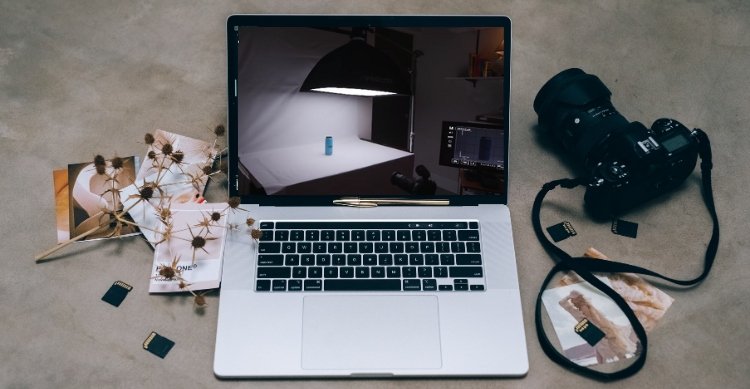
Let’s explore the essential equipment required to create those picture-perfect product images:
An Ideal Camera
At the heart of your setup is a good camera. It doesn’t have to be the most expensive model, but it should offer high resolution and manual settings to give you control over your shots. A DSLR or a mirrorless camera is often a popular choice among e-commerce photographers.
Variety of Lenses
The right lens can make all the difference. A prime lens, such as a 50mm, is great for capturing sharp, detailed images. For smaller products, a macro lens can help you get those close-up shots that show off textures and finer details.
A Suitable Tripod
Stability is key when it comes to product photography. A sturdy tripod ensures that your camera stays still, eliminating any blur from hand movement and allowing for consistent framing across all your shots.
Lighting Systems
Good lighting is crucial. Natural light can work wonders, but for more consistent results, invest in a set of studio lights. Softboxes or umbrella lights help diffuse the light, reducing harsh shadows and highlighting your product’s best features.
A Neutral Backdrop
A clean, neutral backdrop keeps the focus on your product. White is a popular choice as it reflects light well and makes products stand out. You can use a paper roll, a fabric backdrop, or even a portable lightbox for smaller items.
With these essential pieces of equipment, you’ll be well on your way to capturing stunning e-commerce photos that make your products shine.
How to Do Ecommerce Photography?
E-commerce photography is like the window display of an online store, enticing customers to explore and purchase products. But if you are considering, how to do ecommerce photography? Don’t be afraid.
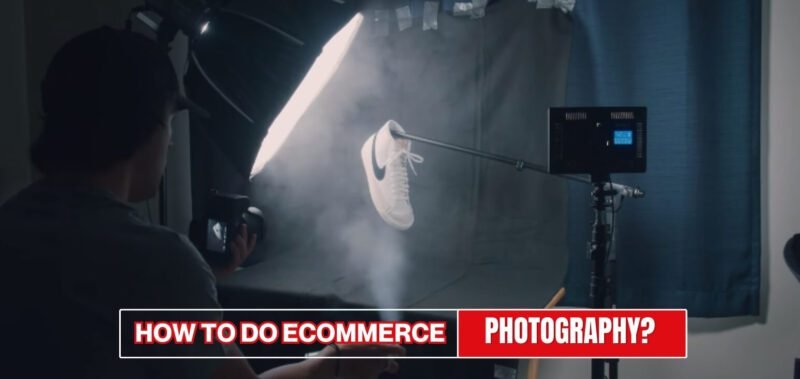
It’s the process of showcasing your products in the best possible light, capturing their details, and making them stand out in a crowded online marketplace. With the right approach, you can create images that not only look professional but also drive sales.
Let’s dive into the step-by-step process to achieve this.
Step 1: Planning and Preparation
Before you start snapping pictures, plan your shoot. Decide on the style and mood you want to convey, considering your brand identity and target audience.
Gather all the necessary equipment, including your camera, lenses, tripod, lighting, and backdrops. Ensure your products are clean and free from any defects that could detract from their appearance.
Step 2: Setting Up Your Shooting Space
Choose a location with good natural light or set up your artificial lighting to create a well-lit environment. A clean, neutral background works best to keep the focus on your product. Set up your tripod to keep your camera steady and maintain consistent framing for all your shots.
Step 3: Camera Settings
Use a camera with manual settings to give you full control over the exposure. Set your aperture to ensure a sharp focus on the product while blurring the background. Adjust the shutter speed and ISO to get the right exposure, ensuring your images are bright and clear without any graininess.
Step 4: Taking the Shots
Start by capturing your product from different angles to show its various features and dimensions. Use a macro lens for close-up shots to highlight details like textures and patterns.
Don’t forget to take some lifestyle shots that show your product in use, as these can be particularly effective in connecting with your audience.
Step 5: Post-Processing
Once you have your shots, it’s time to edit them to perfection. Use photo editing software to adjust the brightness, contrast, and saturation to make your images pop. Crop and resize your photos to fit the requirements of your e-commerce platform, ensuring they look great on both desktop and mobile devices.
Step 6: Consistency is Key
For a professional look, maintain consistency across all your product photos. This means using the same background, lighting, and editing style for each image. Consistent photos not only look better but also create a cohesive brand image that customers will recognize and trust.
Step 7: Optimizing for Web
Before uploading your photos to your e-commerce site, make sure they are optimized for the web. This means reducing the file size without compromising on quality, so your images load quickly and don’t slow down your website. Use appropriate file formats like JPEG or PNG, depending on the needs of your platform.
By following these steps, you can create stunning e-commerce photography that showcases your products in the best light, attracts customers, and drives sales. As you know, the goal is to make your products look so good that shoppers can’t resist clicking that “add to cart” button.
Can You Do E-commerce Photography By Yourself?
Yes, you can certainly do e-commerce photography by yourself! With the right equipment, a bit of practice, and a keen eye for detail, you can capture professional-quality images that showcase your products beautifully.
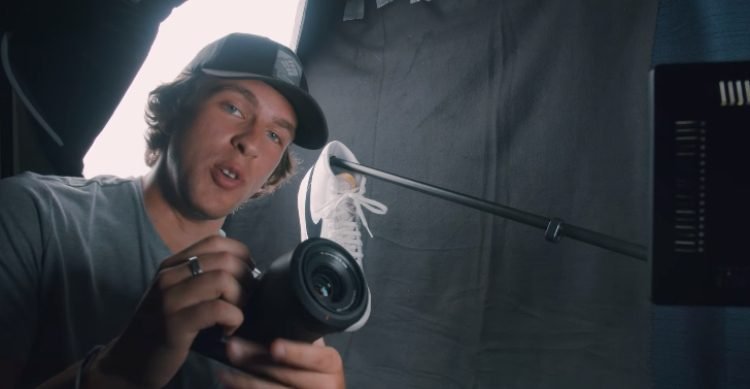
Learning the Basics
The first step is to understand the basics of photography, including camera settings, lighting, and composition. There are plenty of online tutorials and resources available to help you get started. In that case, if you have an iPhone, you can do product photography with iPhone easily using its advanced camera features and a variety of available photography apps. Practice with different settings and angles to see what works best for your products.
Investing in Equipment
While you don’t need the most expensive gear, investing in a good camera, a tripod, and some basic lighting equipment is essential. These tools will help you achieve clear, well-lit photos that make your products look their best.
Post-Processing
A good photographer should know how to edit his or her photos as well as how to take them. Simple adjustments like cropping, adjusting brightness, and enhancing colors can make a big difference in the final look of your images.
When Does It Need to Be Done by Professionals?
While taking on e-commerce photography yourself can be rewarding, there are times when calling in the professionals is the best move. Here are the core reasons to look out for a professional for doing e-commerce photography.
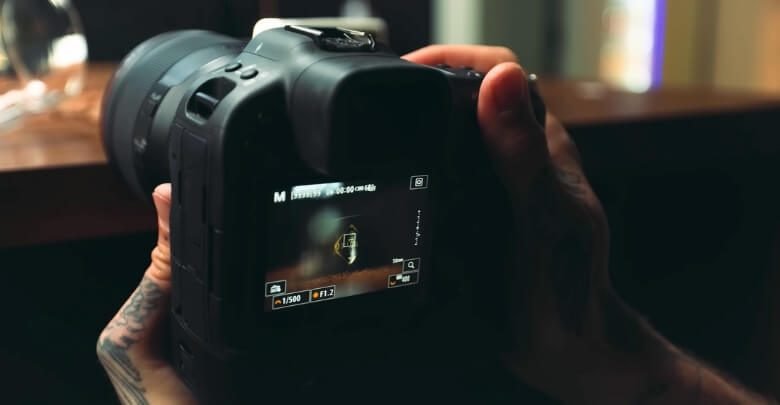
Complex Products
If your products have intricate details or require special lighting to truly shine, professional photographers have the skills and equipment to capture them perfectly. They know how to highlight the unique features of each item, ensuring your products stand out in the crowded online marketplace.
High Volume
When you have a large inventory or need to update your product photos frequently, it can be overwhelming to handle it all on your own. Professional services, like Visual Sparrow, can efficiently manage high-volume shoots, ensuring consistency and quality across all images.
Brand Image
For luxury or high-end products, the quality of your images reflects the quality of your brand. Professional photographers can create a sophisticated and polished look that uplifts your brand’s image, attracting a more discerning customer base.
In these scenarios, investing in professional e-commerce photography services can save you time, ensure top-notch quality, and ultimately contribute to the success of your online store.
FAQs About How to Do Ecommerce Photography?
When it comes to selling products online, having great images is key. Here are some frequently asked questions about e-commerce photography to help you get started.
What Are the Two Types of Photography for E-commerce?
A lifestyle photograph is used on a website, and a product-only photograph is used on a website. Product-only photography emphasizes the product’s features and design against a plain background, while lifestyle photography shows the product in use.
How Can I Make My E-commerce Photos Stand Out?
You can enhance your e-commerce photos by using appropriate lighting, a clean and simple background, and capturing them from different angles. To demonstrate the product’s usage or context, add creative elements or props.
How Important is Post-processing in E-commerce Photography?
E-commerce photography requires post-processing to enhance image quality and appeal. Software can correct lighting, color balance, and sharpness, and remove distractions.
Endnotes
The ability to master e-commerce photography is necessary to display your products effectively online. From setting up the right shooting space with proper lighting and a clean background to using a high-quality camera and editing your photos, each step plays a crucial role in the process.
When it comes to how to do ecommerce photography, it’s all about capturing your products in a way that highlights their most impressive features. This appeals to your target audience.
You should make sure to keep your images consistent and optimized for the web. Don’t hesitate to seek professional help like Visual Sparrow to ensure your e-commerce photography stands out.
